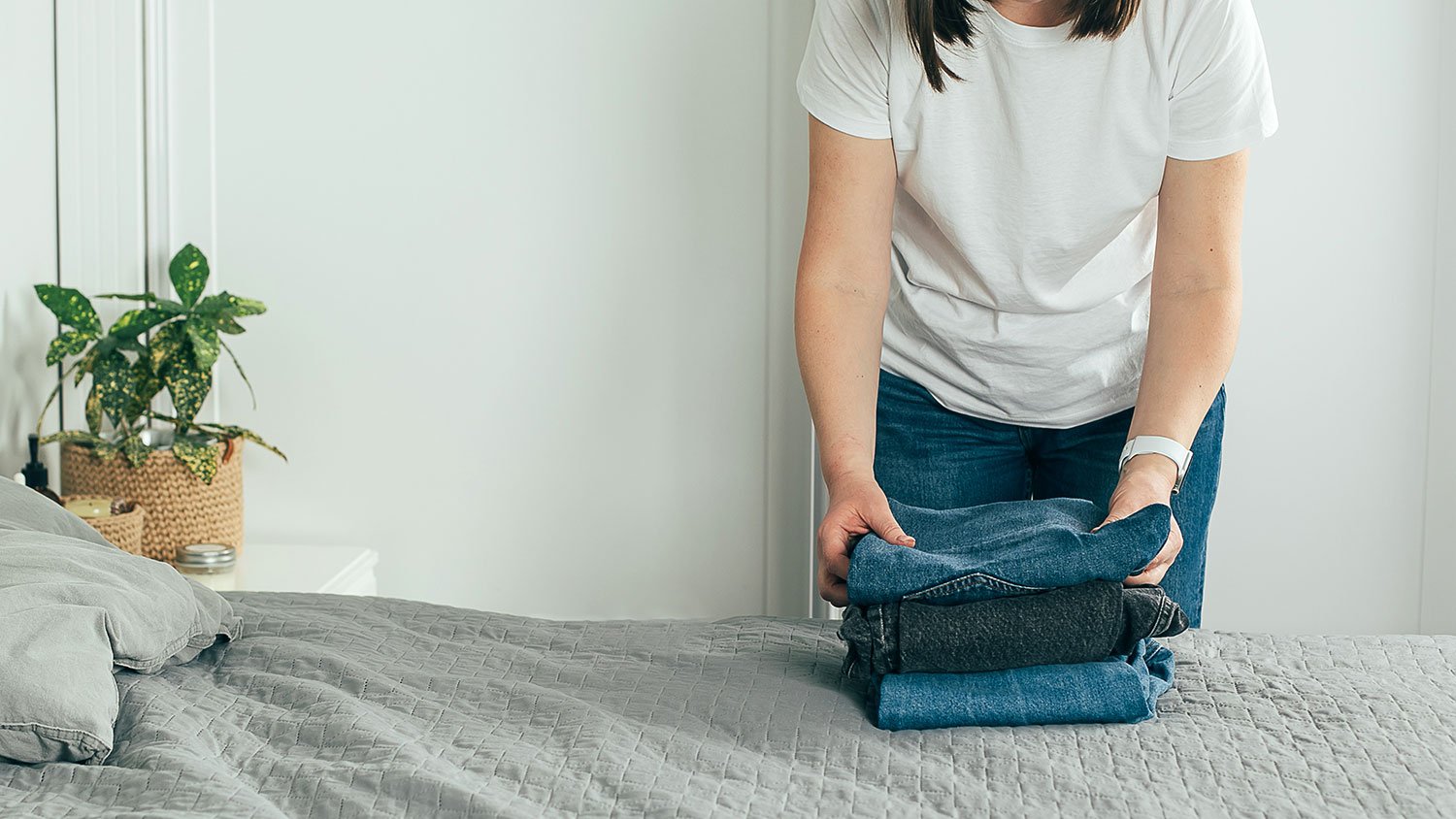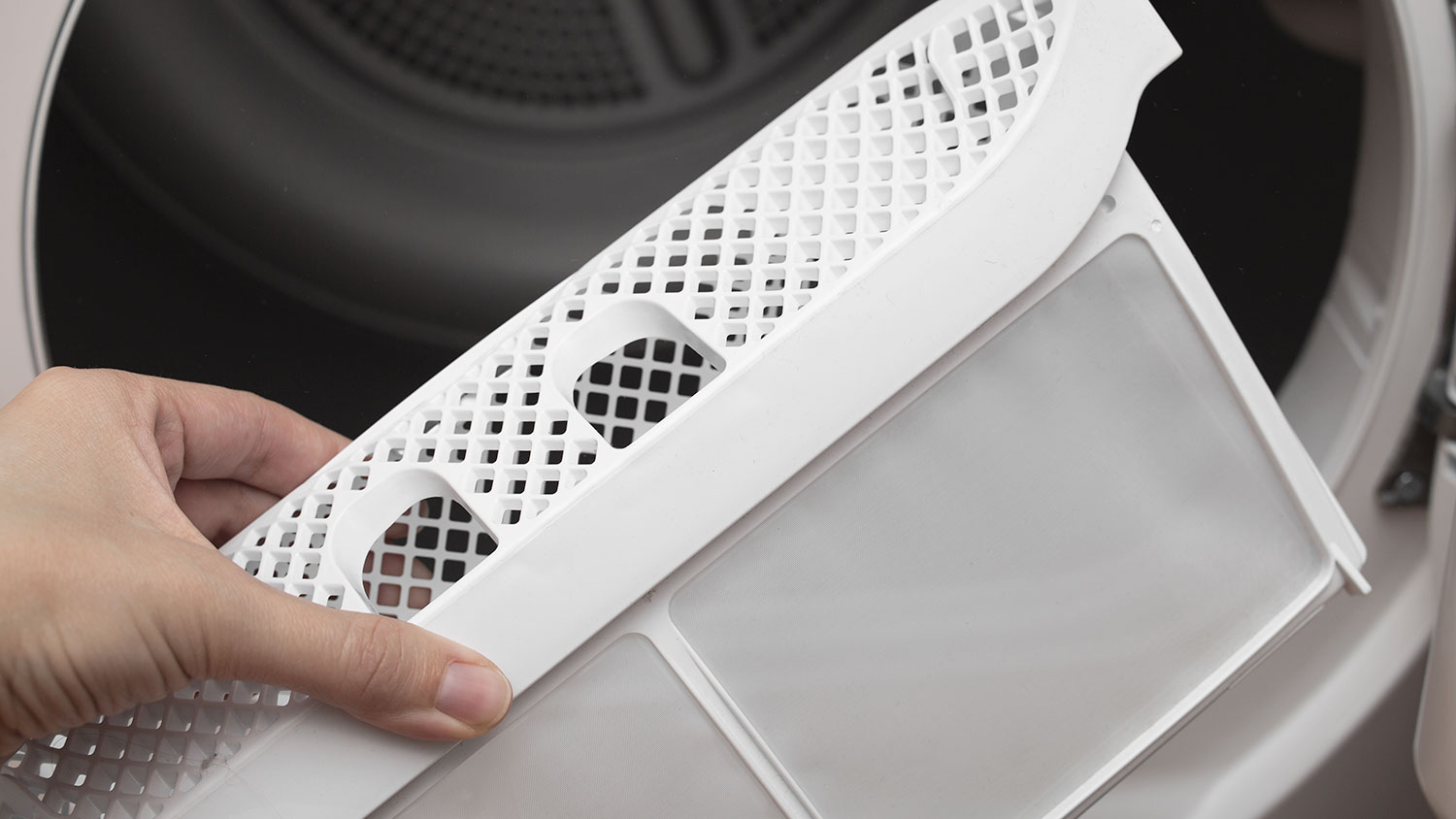
Clean walls are an important part of a well-kept house. Use this wall cleaning cost guide to see what it would cost to hire a professional to get the job done.
These tips are better than finding an old $5 bill in your pocket


You’ve poured in your laundry detergent and fabric softener, tossed in dryer sheets, and steamed away the creases. But at the same time, you’ve probably spent a lot of extra money washing your clothing and linens.
From overpouring the detergent to running hot water for delicate items, there are many hidden costs that add up when you do laundry frequently. Put money back in your pocket and keep your garments looking as good as new with these 10 easy ways to save money on laundry.

You’ve thrown on jeans just long enough to make a grocery run, then it’s right back into your pajamas for the rest of the day. Don’t toss that denim into the dirty laundry hamper! Items like denim, outerwear, or clothes that you wear for short periods of time don’t need to be washed as often. According to denim brand Levi’s, you can wash jeans every 10 wears—or until they begin to smell a little funky.
According to Energy Star, a water heater can make up 90% of the energy a washer consumes. Hot water is important when cleaning those grimy kitchen towels or bath mats to help disinfect them, but for your usual clothes and bed linens, swap for cold water instead. Using cold water can also help some garments and bedsheets last longer, too.
You’re likely using more detergent than you actually need, which means you’re running to the store to restock more often than necessary. Instead of filling the cap to the brim and dumping it into the machine, just measure out about one tablespoon for an average load of laundry.
Whether you have a line in the backyard or a simple drying stand in your laundry room, you can use these tools to dry your clothes for free. Dryers use more energy than washers. For the average household, you can save around $15 to $100 a year by drying clothes on a line or rack instead of in the dryer.
You can cut laundry costs by making your own fabric softeners and stain removers in bulk. While you can save money by making some laundry products yourself, you might not want to attempt to make laundry detergent at home. Homemade laundry cleaners are actually soaps, not detergents, meaning they are made with fats and oils that can actually ruin clothing and build up and break your washing machine.
Stain remover: Vinegar, lemon juice, baking soda, and other kitchen staples make great stain removers.
Fabric softener: To make your own fabric softener, combine one part baking soda to eight parts water and six parts distilled white vinegar in a large jug. You can add a few drops of your favorite essential oil for a scent boost. Add about one-half cup to the fabric softener dispenser per load.

If you aren’t already, clean out the dryer lint trap after every load. This will help the dryer run more efficiently, and it reduces fire hazards. Additionally, you may consider hiring a local dryer vent cleaner to clean the dryer vents about twice per year. This also ensures the dryer runs optimally and minimizes the risk of fires.
You might have the washer and dryer cycles set to normal for every load, but you’re rinsing your money down the drain by doing so. Instead of the “set it and forget it” approach, utilize those cycles to your advantage.
Quick-wash cycle: On your washer, use the shortest cycle, often labeled as a quick wash, to minimize water and energy use for every load.
High-speed cycle: On the washer, turn on the high-speed spin setting or the extended spin setting, which is the machine’s way of wringing out your clothes. This will get rid of as much moisture as possible, meaning your dryer won’t have to work as hard (or use as much energy) to dry the load.
Moisture sensors: Many modern dryers have moisture sensors, which will notify the dryer to shut off when it detects that the clothes are dry.
Cool-down cycle: Some dryers include cool-down cycles. This setting turns off the heat on the dryer early, but the clothes finish tumbling in the residual heat to save energy.
Dryer sheets are popular for reducing static and making fresh loads of laundry more fragrant, but restocking on boxes of these single-use sheets can add up. Instead, you can swap dryer sheets for reusable wool dryer balls. Dryer balls help keep the clothing separated as they tumble around the dryer, meaning the clothes also require less time and energy to dry.
Dryer sheets typically cost around $8 to $10 for a box of 240 sheets. It’s recommended to use one or two sheets per load, meaning one box lasts for about 120 to 240 loads.
Wool dryer balls cost $10 to $20 for six wool balls. Each ball lasts about 1,000 loads. Use two to six dryer balls per load.
Your washer uses about the same amount of energy to wash a few sweaters and a pair of pants as it does to wash an entire load of laundry from the past few days. To make the most of the energy demand, make sure the washer load is full before running the appliance.
If you want to save money on your electric bill, consider investing in Energy Star appliances. Energy Star is a government certification for products that are more energy-efficient than their conventional counterparts. An Energy Star washer saves about 25% of energy compared to a regular washer, and an Energy Star dryer saves about 20% of energy compared to conventional dryers.
From average costs to expert advice, get all the answers you need to get your job done.

Clean walls are an important part of a well-kept house. Use this wall cleaning cost guide to see what it would cost to hire a professional to get the job done.

When nails and sawdust are all that remains of your big renovation, who is responsible for cleanup after construction? Here's what to know about the final deep clean.

Ammonia for household use can help do everything from making the toughest chores a breeze to repelling pests of all sizes to even feeding your houseplants. Find out some of the best, most surprising ways to use ammonia around the house.

Flat paint is great for hiding imperfections but presents issues with cleaning. Learn how to clean walls with flat paint the right way in this simple DIY guide.

Construction leaves dust and debris in its wake. If you hire a pro to handle it, here are the post-construction cleanup questions you should be ready to answer.

DIY cleaning solutions can be safe and reliable, not to mention cost effective. Use these tips for cleaning with vinegar and baking soda to reap the benefits.